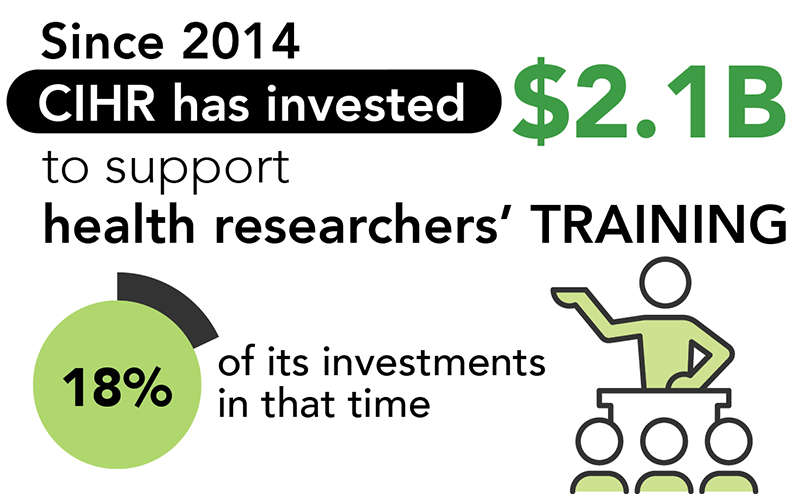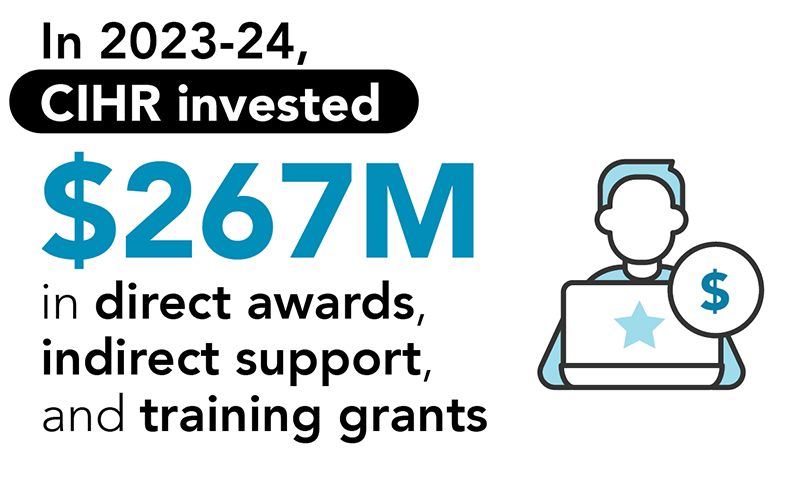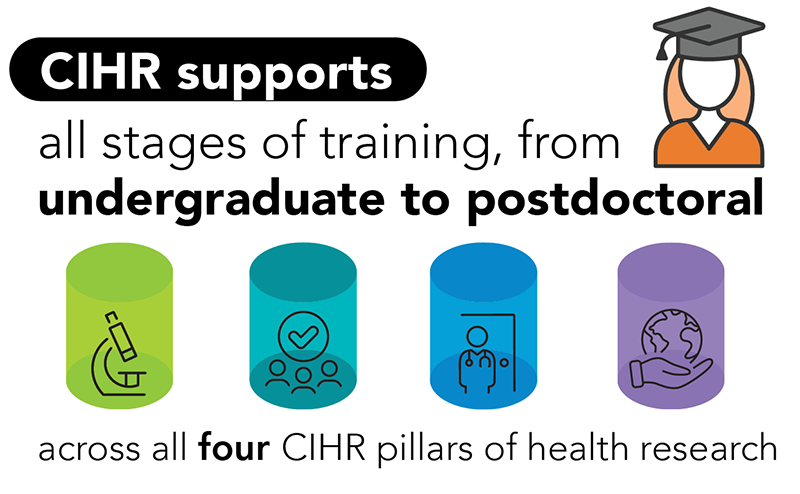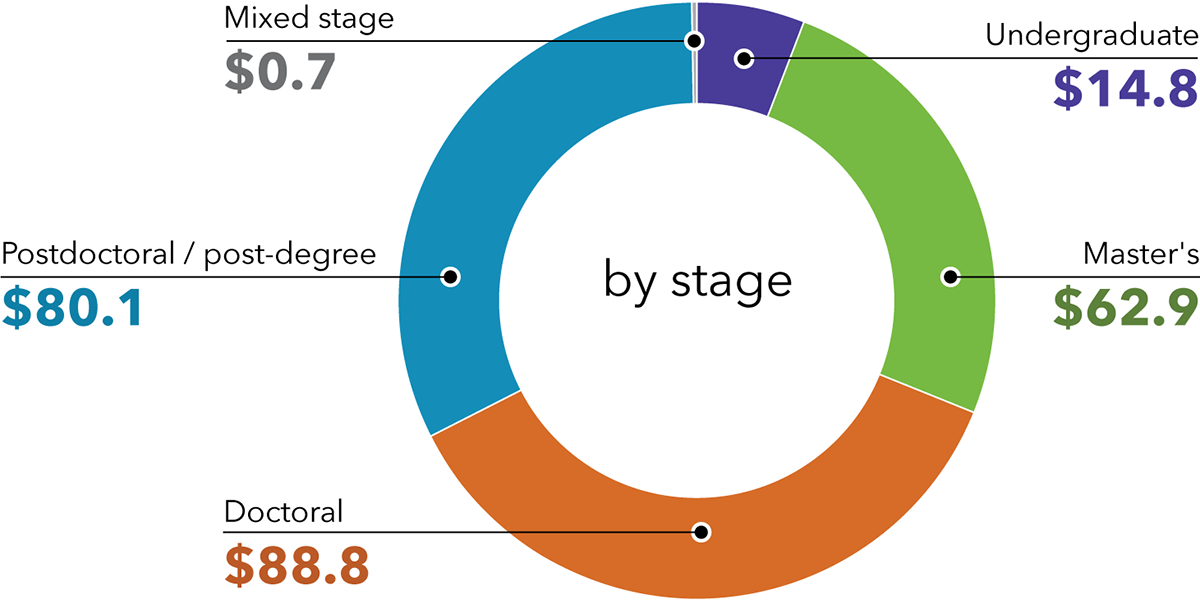CIHR Health Research Training Investments
The Canadian Institutes of Health Research (CIHR) strives to ensure a strong foundation of future health research leaders, and is committed to offering programs that increase the supply of highly-qualified research personnel.

Since 2014, CIHR has invested $2.1B to support health researcher training. This represents 18% of CIHR total research investments in that time.
CIHR funds training through a wide range of programs, including:
- Recurrent awards, such as Canada Graduate Scholarship – Master's and Doctoral, Vanier Doctoral award; Banting Fellowship, CIHR Fellowship, Health System Impact Fellowship.
- Innovative capacity building designs, such as Health Research Training Platform, Clinical Trials Training Platform, REDI Early Career Transition Award.

In 2023–24, CIHR invested $267M in the next generation of the Canadian health research workforce:
- $81.4M through direct awards (Training and Career Support and Research in Priority Areas funding envelopes) to 2,282 trainees.
- $163.9M to indirectly support trainees through stipends, as reported by CIHR grant holders (Investigator Initiated and Research in Priority Areas funding envelopes).
- $21.8M in training grants (Research in Priority Areas funding envelope) to platforms providing training and mentorship.

Supporting every stage of training, across CIHR's four pillars:
Figure 1: Direct and indirect training support in 2023–24 by stage, $M

Figure 1 long description
- Undergraduate $14.8
- Master's $62.9
- Doctoral $88.8
- Postdoctoral/post-degree $80.1
- Mixed stage $0.7
Figure 2: Direct and indirect training support in 2023–24 by pillar

Figure 2 long description
- 57% Biomedical
- 18% Clinical
- 10% Health systems/services
- 11% Social/Cultural/Environmental/Population Health
- 4% Not specified
Figure 3: Proportion of awarded applications that were cross-pillar in 2023–24

Figure 3 long description
- 35% cross-pillar
- 65% non-cross-pillar
- Date modified: